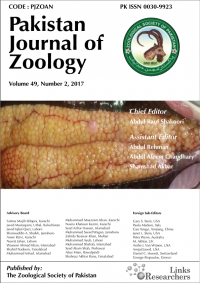Current Insight into Nosema Disease of Honeybees and Their Future Prospective
Current Insight into Nosema Disease of Honeybees and Their Future Prospective
Hamed A. Ghramh1,2,3 and Khalid Ali Khan1,2,4*
ABSTRACT
Honeybees (Apis mellifera) play a crucial role in global agriculture and ecosystem stability through pollination services. However, their populations have faced numerous threats in recent years, with Nosema disease emerging as a significant concern. Nosema is caused by microsporidian parasites of the genus Nosema, affects the digestive tracts of honeybees, leading to compromised health and reduced foraging efficiency. This literature review comprehensively examines the current knowledge regarding Nosema disease in honeybee populations, encompassing research from diverse fields, including entomology, microbiology, and ecology. The review begins with an overview of honeybee importance and Nosema disease’s ecological and economic consequences. It subsequently delves into the etiology of Nosema species highlighting the various factors contributing to infection dynamics. By synthesizing a wide range of research studies, we explore the diagnostic methods, and management strategies currently employed in combating Nosema disease. Furthermore, we discuss the implications of Nosema infection on honeybee colony health, emphasizing its role in colony collapse and the intricate interactions between Nosema and other stressors, such as pesticides and pathogens. As we peer into the future, this review contemplates the potential consequences of climate change and environmental stressors on Nosema disease prevalence and distribution. We also consider the advancements in molecular techniques and genetic research that hold promise for more targeted and effective interventions. Additionally, we discuss the importance of sustaining honeybee populations for agriculture and biodiversity conservation and highlight the need for further research into Nosema disease. In conclusion, this literature review underscores the importance of understanding Nosema disease in honeybee populations. It highlights the multifaceted nature of this threat, its current status, and the promising directions for future research and management strategies. As we strive to safeguard honeybee health and ecosystem services, a comprehensive understanding of Nosema disease remains pivotal for ensuring the sustainability of both honeybees and the ecosystems they support.
To share on other social networks, click on any share button. What are these?










